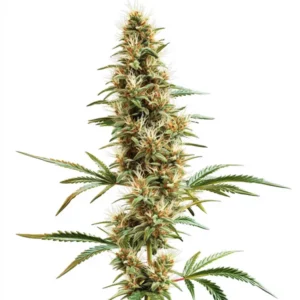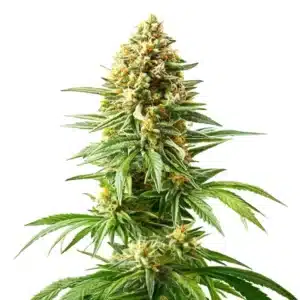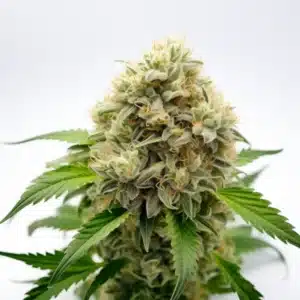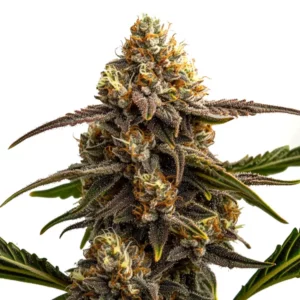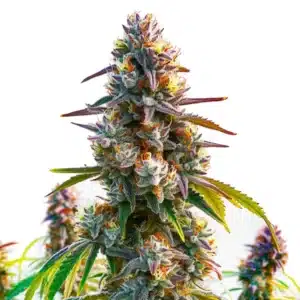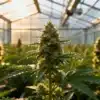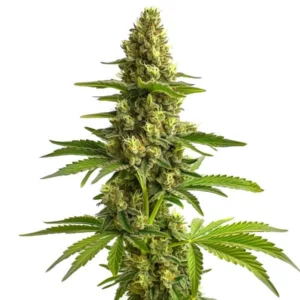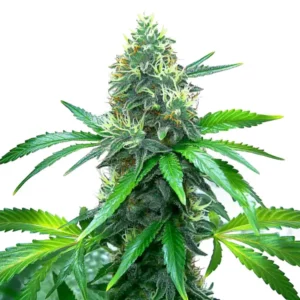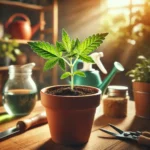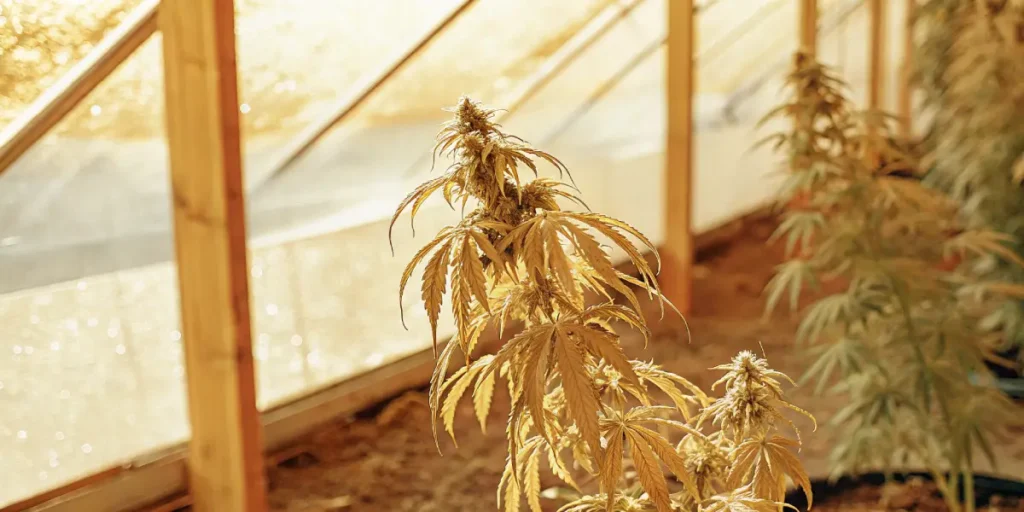
Cannabis Plant Water Stress Symptoms
Water stress is a common challenge for cannabis growers. It affects the health and yield of your plants. Recognizing cannabis plant water stress symptoms early can save your crop from disaster. Whether you’re a first-time grower or a seasoned expert, understanding these signs is crucial for a successful harvest.
Water stress comes in two main forms: overwatering and underwatering. Both can cause significant issues for your cannabis plants. It’s essential to strike the right balance to ensure healthy growth and optimal yields. Let’s dive into the various symptoms and how to address them.
Recommended Strains
2046 Fast Version
|
|
THC | 20% - 26% (Medium) |
|
|
Type | Fast Flowering |
|
|
Yield | High |
|
|
Phenotype | 20% Indica / 80% Sativa |
Afghan Kush x Blueberry
|
|
THC | 18% - 20% (Medium) |
|
|
Type | Feminized |
|
|
Yield | Low |
|
|
Phenotype | 70% Indica / 30% Sativa |
From drooping leaves to stunted growth, your plants will show clear signs when they’re not happy with their water intake. By learning these symptoms, you can adjust your watering practices and keep your cannabis plants thriving.
Cannabis Plant Underwatering Signs
Underwatering can be just as detrimental as overwatering. The most obvious cannabis plant underwatering signs include wilting leaves and drooping stems. When cannabis plants don’t get enough water, they lose the turgor pressure that keeps them upright.
Another indicator of underwatering is dry soil. If the top inch of soil feels dry to the touch, it’s a sign that your plant needs water. Be careful though; overcompensating for underwatering can lead to overwatering, which has its own set of problems.
Additionally, underwatered plants may exhibit slower growth rates and pale leaf coloration, reflecting a lack of essential nutrients being transported efficiently within the plant. Consistent monitoring of soil moisture and plant appearance is key to preventing these cannabis plant underwatering signs from escalating.
Ensuring proper hydration is not just about adding water but also about maintaining optimal soil conditions. Using mulch can help retain moisture and protect roots from extreme temperatures, effectively reducing the risk of underwatering.
Cannabis Drought Stress Indicators
Drought stress happens when plants go too long without water. Look for curling leaves and brown edges as cannabis drought stress indicators. These symptoms occur because the plant is trying to conserve water by reducing its surface area.
To prevent drought stress, monitor your watering schedule closely. Ensure that your plants receive consistent moisture, especially during hot weather. Using a moisture meter can help you keep track of soil hydration levels effectively.
Besides to the visible signs, drought stress can lead to diminished plant vigor and reduced flowering potential. It’s imperative to address these cannabis drought stress indicators promptly to avoid long-term damage to your crop.
Employing drip irrigation systems can offer a more controlled watering approach, helping to maintain consistent moisture levels and prevent the onset of drought stress symptoms.
Promos & Deals
Signs of Overwatering Cannabis Plants
Overwatering is a common mistake among new growers. Signs of overwatering cannabis plants include yellowing leaves and root rot. The roots need oxygen, and too much water can suffocate them.
If you notice your cannabis plants looking unhealthy, check the soil. If it’s consistently wet or soggy, you’re likely dealing with overwatering. Adjust your watering schedule and allow the soil to dry out before watering again.
Excessive water can also lead to mold growth and nutrient leaching, further exacerbating the decline in plant health. Recognizing these signs of overwatering cannabis plants early can prevent irreversible damage.
Implementing a watering schedule based on plant needs rather than a fixed routine can help avoid overwatering. This approach ensures that water is provided only when the plant truly requires it.
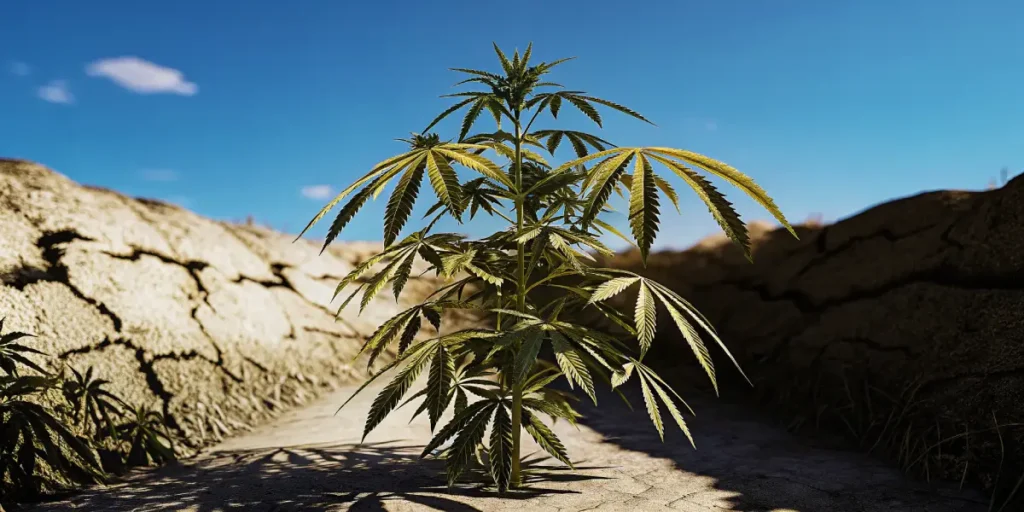
Effects of Water Stress on Cannabis Growth
Water stress, whether from over or underwatering, can significantly affect cannabis growth. Stunted growth, poor yields, and increased susceptibility to pests are common effects of water stress on cannabis growth.
To mitigate these effects, it’s vital to maintain a balanced watering regimen. Use well-draining soil and pots with drainage holes to prevent waterlogging. Additionally, observe your plants regularly to catch any signs of water stress early.
Furthermore, water stress can impair photosynthesis, thus affecting the plant’s ability to produce energy and grow efficiently. Addressing the effects of water stress on cannabis growth is crucial for achieving optimal results.
Regularly adjusting environmental factors such as humidity and temperature can also play a role in minimizing water stress, promoting a more stable growing environment for your cannabis plants.
Cannabis Moisture Deficiency Symptoms
Moisture deficiency can lead to severe problems for cannabis plants. Look for symptoms like brittle leaves and slow growth rates. These are clear cannabis moisture deficiency symptoms that require immediate attention.
Address moisture deficiency by ensuring your plants receive adequate water. However, be cautious not to swing to the other extreme and overwater. Consistency is key in maintaining healthy cannabis plants.
In addition to visible symptoms, moisture deficiency can cause a decline in overall plant resilience, making them more susceptible to diseases and environmental stresses. Monitoring these cannabis moisture deficiency symptoms is vital.
Implementing a regular watering schedule and using soil amendments that retain moisture can greatly reduce the risk of moisture deficiency, ensuring your plants remain healthy and robust.
Real-Life Examples and Solutions
Take the example of a grower with a Gorilla Glue 4 strain from Blimburn Seeds. They noticed the leaves curling and turning brown at the edges. Knowing these as cannabis drought stress indicators, they adjusted their watering schedule, and the plant recovered.
Another grower experienced yellowing leaves on their Blue Dream strain. Recognizing these as signs of overwatering cannabis plants, they improved drainage and reduced watering frequency. The plant soon thrived.
Such real-life experiences highlight the importance of being attuned to cannabis plant water stress symptoms and taking corrective measures promptly. Adaptation and vigilance are key to successful cultivation.
Sharing knowledge and learning from other growers can provide valuable insights into managing water stress effectively, ultimately leading to healthier and more productive cannabis plants.
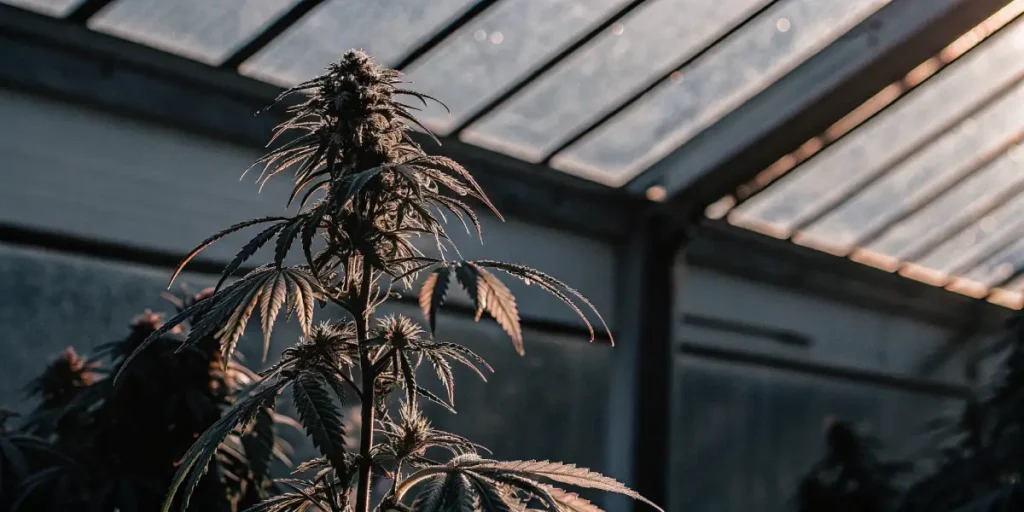
FAQs
What are the main cannabis plant water stress symptoms?
The main symptoms include wilting, yellowing leaves, and stunted growth. Each symptom can indicate either overwatering or underwatering. Observing the plant and soil conditions closely helps in diagnosing the issue correctly.
For underwatering, look for dry soil and droopy leaves. Overwatering often results in yellow leaves and soggy soil. Adjusting your watering routine based on these observations can help resolve the issue.
Understanding the nuances between these symptoms is crucial for effective intervention. Addressing cannabis plant water stress symptoms early can prevent further complications and ensure a thriving crop.
Incorporating tools like moisture meters and hygrometers can assist in accurately identifying water stress symptoms, allowing for precise adjustments in your watering strategy.
How can I tell if I’m overwatering my cannabis plants?
Common signs of overwatering include yellowing leaves and consistently wet soil. The roots require oxygen, and too much water can suffocate them, leading to root rot.
To check for overwatering, feel the soil. If it’s always wet, reduce watering frequency. Ensure pots have drainage holes to help excess water escape, preventing root damage.
Observing the plant’s overall vigor and growth patterns can also provide clues. Slow growth and leaf drop are additional indicators of overwatering stress.
Adjusting your watering approach and incorporating well-aerated soil mixes can help alleviate the adverse effects associated with overwatering.
What should I do if my cannabis plants show underwatering signs?
If you notice underwatering symptoms like wilting, water the plants immediately. Ensure that the soil is evenly moist but not soaking wet.
Regularly check soil moisture levels to prevent future underwatering. Using a moisture meter can assist in maintaining the right balance.
Promptly addressing cannabis plant underwatering signs can prevent irreversible damage and ensure the plant remains healthy and productive.
Implementing consistent watering practices based on plant needs rather than a fixed schedule can enhance water management and plant health.
Are some cannabis strains more resistant to water stress?
Yes, some strains like Blue Dream and Bruce Banner 3 are more resilient to water stress. These strains can handle minor fluctuations in watering better than others.
Choosing the right strain for your growing environment can help mitigate water stress issues. Always consider the specific needs of the strain you are cultivating.
Researching and selecting strains that are naturally more adaptive to your climate and cultivation conditions can significantly reduce the likelihood of water stress issues.
Cultivating a diverse range of strains can also provide insights into how different plants respond to water stress, helping refine your growing techniques.
Can water stress affect the potency of my cannabis plants?
Yes, water stress can impact potency. Stress affects the overall health of the plant, which in turn can reduce the quality and quantity of cannabinoids produced.
Maintaining a consistent watering schedule and observing your plants closely can help preserve their potency. Healthy plants produce better yields and higher quality buds.
Cannabis plant water stress symptoms, if not addressed, can lead to decreased terpene and cannabinoid production, negatively affecting the plant’s overall quality.
Ensuring optimal water management and stress reduction techniques can enhance the potency and flavor profile of your cannabis plants, leading to superior harvests.


